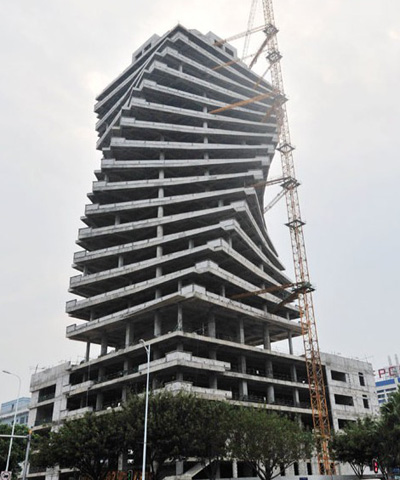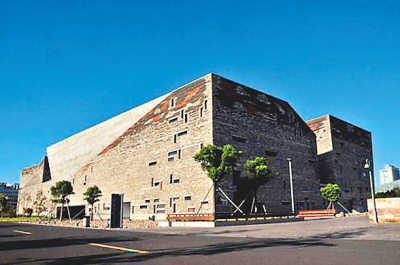19 Dec 2013
The bottle opener, cooking syringe and egg whisk: Is “modern” architecture ruining Chinese cities?
Beijing, (People’s Daily Online), December 17, 2013 – Since China entered the modern era, a modernist trend in architecture has swept the country. The design of modern Chinese buildings is deeply influenced by western styles; traditional Chinese architecture has generally disappeared from view and some inappropriate elements of western construction are taking hold in China’s contemporary architecture.
Some modern buildings in China have won favor for their structure and their functional suitability, but others are famous for their strange appearance or their radical style. An example is the twisted skyscraper in Xiamen which is the headquarters of the Ruihua high-tech R&D Center. 99.7m tall, the building has been described as “a giant fried dough twist”- a Chinese snack. Someone joked that “the building makes my stomach ache.”
 |
| Shanghai’s new landmark: China’s tallest building. (Photo/People’s Daily Overseas Edition) |
Another example is the Shanghai Tower. 632 meters high, it is China’s tallest and the world’s second-tallest building. Together with the Shanghai World Financial Center and the Jin Mao Tower, the three buildings have been dubbed “the three-piece kitchen set” – a bottle opener, a cooking syringe and an egg whisk.
Every day we see more and more monster high-rise buildings of dubious appearance springing up over our cities, generating a heated debate among experts and media. Some are beginning to form the view that it is time to start asking questions about western designers’ occupation of Chinese architecture, about whether these image-focused skyscrapers are good for our cities, and whether western features are being properly utilized.
 |
| Twisted building in Xiamen (Photo/CNS) |
Modernist trend in architecture is all-pervasive
As a new form of architecture, modernism began to gain popularity after World War II, and was adopted by many architects. Architects started to release their passions and liberate their ideas, and their designs were not only functional but also stylish. A series of weird, strange, and irregular-shaped buildings began to sprout in modern cities.
When Chinese tradition meets modern architecture
We do not see too many success stories when buildings attempt to combine modern architecture and Chinese traditional design, because Chinese architecture has very different features from modern architecture. For example, traditional Chinese buildings emphasize articulation and bilateral symmetry, but western modern architecture encourages imbalance. Classical Chinese buildings focus on width, while western styles tend to build in height and depth.
If Chinese architects merely copy western styles or ideas without a little thought or understanding, the Chinese public are likely to feel uncomfortable and reject them, just as people have responded negatively to the Xiamen twist building; and if architects leap straight from ancient Chinese to modern western, they will miss an important step in better representing Chinese culture.
 |
| Ningbo Museum, designed by Wang Shu, the first Chinese citizen to win the Pritzker Architecture Prize. The design is a conceptual combination of mountains, water and oceans. (Photo/People’s Daily Overseas Edition) |
Architects should conserve Chinese style in their architecture.
Faced with social development and a growing population, architecture has to change its forms and shapes in accordance with public needs. We cannot halt progress in terms of our cultural inheritance.
The late Liang Ssu-ch’eng, a famous Chinese architect said: “China is an old country in the East; it would be grievous if the country were to lose its artistic character, its cultural roots, and its architectural appearance.” His opinion still holds good today.
Architecture is the carrier of culture; China should integrate cultural and traditional elements in its construction that retain Chinese characteristics. And to blend with western model style, Chinese architects should understand the designs used in modern architecture and think more carefully. They must understand that making a building unique does not make it number one, that a stylish building does not need to be strange in appearance, and that maximizing space utilization does not mean that a building has to be the tallest. Architecture is a public service; it should not be a channel for showing off.
